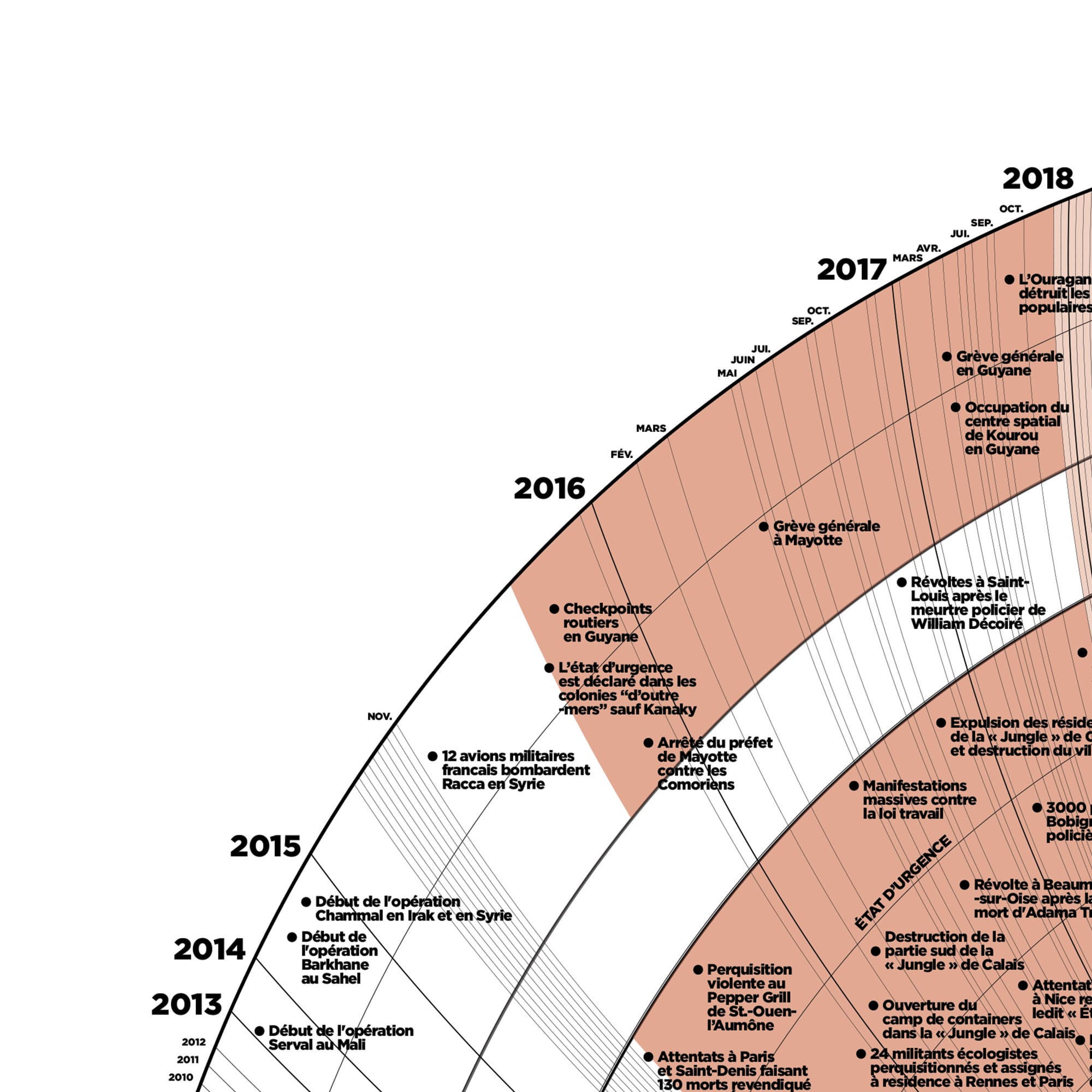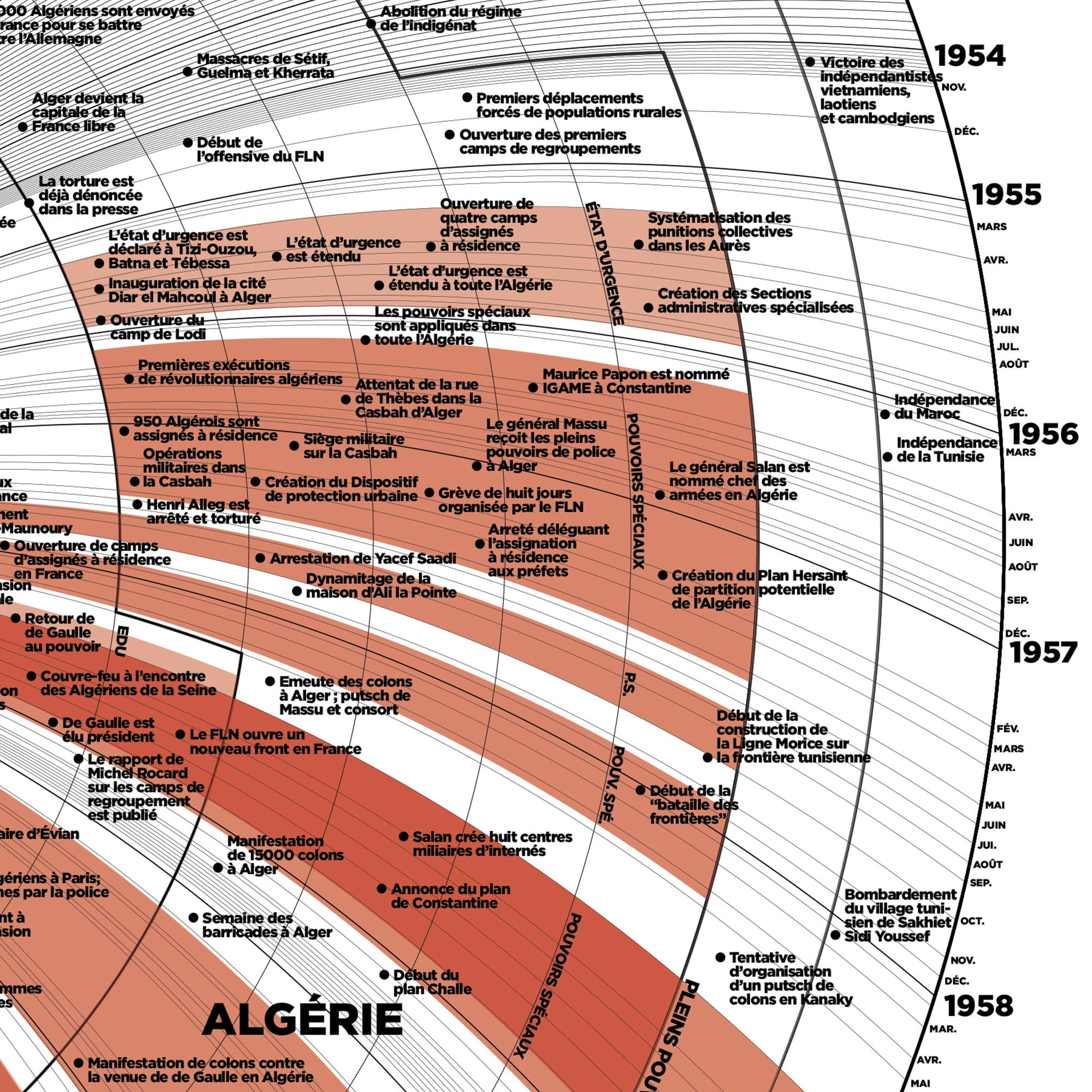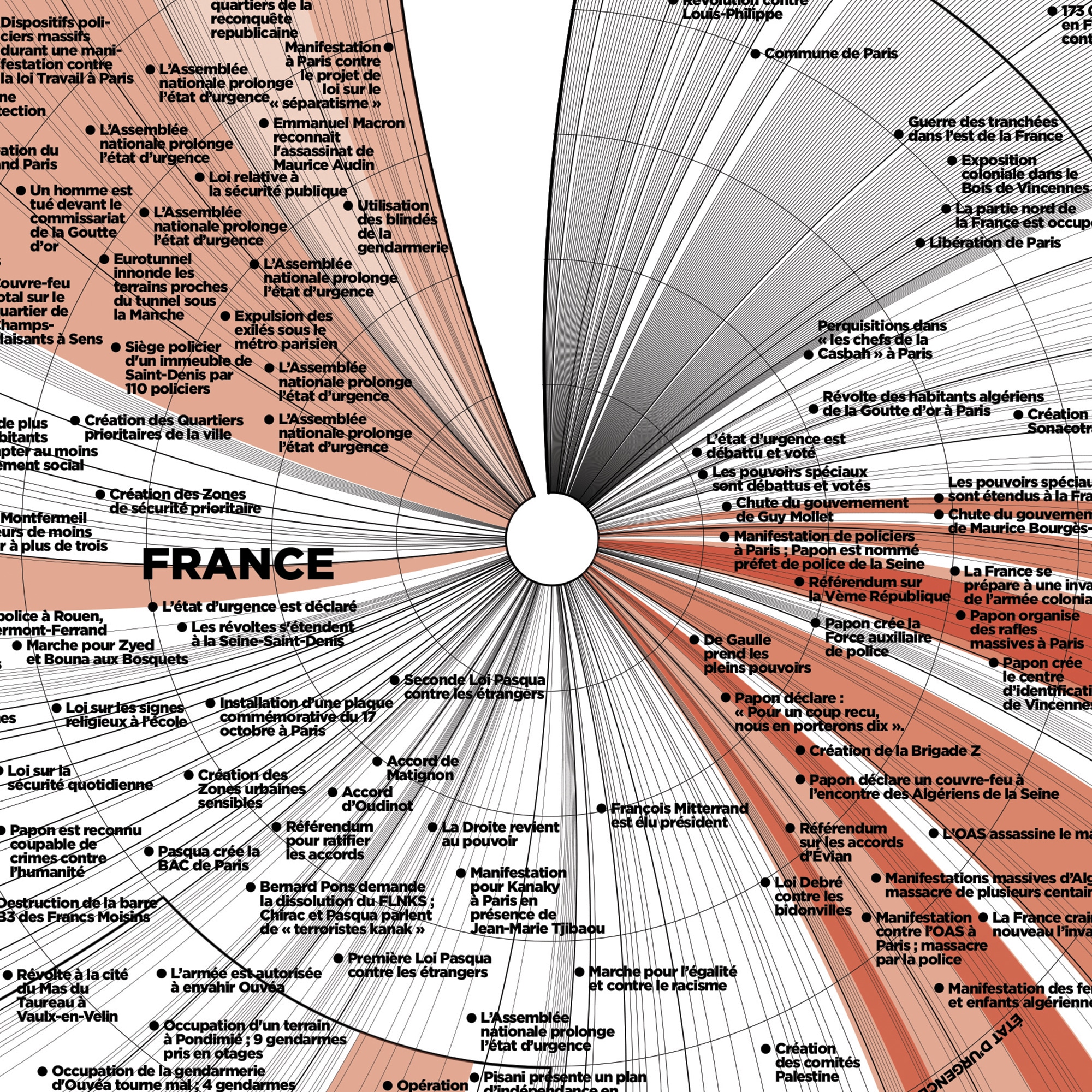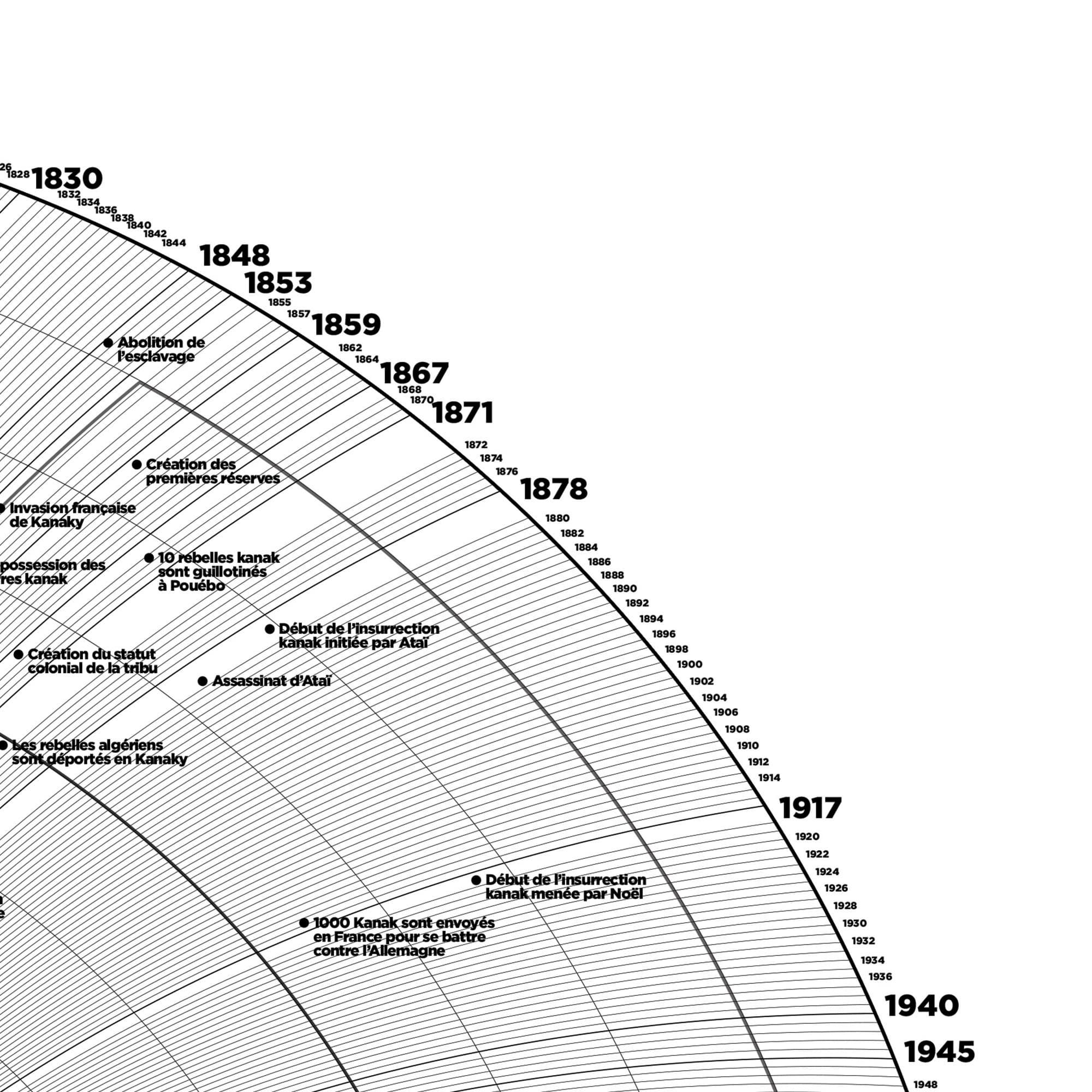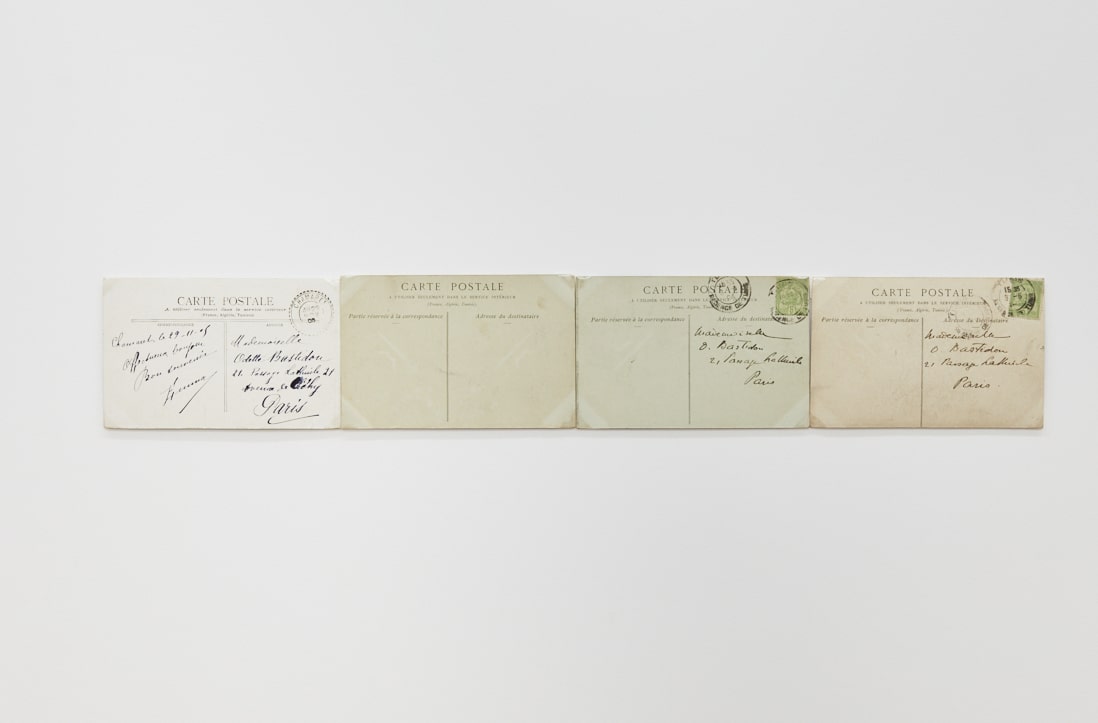Sophie Kovel: On the subject of the making and remaking of the urban environment—often in the interest of economic, social, and other forces—Léopold, perhaps you can share your work on the colonial continuum.
Léopold Lambert: My work is interested in, among other things, the colonial history of the French state of emergency, which I would describe as a state of exacerbation, something that reveals colonial violence or formalizes it in trying to make it legal. I’m thinking in particular of three time-spaces: the Algerian revolution, from 1954 to 1962; one of the most recent indigenous Kanak insurrections in Kanaky, between 1984 and 1988; and then the massive youth uprisings in the French banlieues in 2005, but also in the past seven and a half years.
The colonial continuum, a relatively common concept in France, focuses on how coloniality is still very much present despite a nationalist narrative that claims French colonialism ended with Algerian liberation in 1962—which is extremely easy to disprove. But as a trained architect, and as someone sensitive to the built environment, I also want to insist on the spatial dimension of the continuum: space and time as inseparable.
We can represent this continuum as a space-time surface that folds over itself, connecting points that at first glance seem far away from each other. I find the Baker’s Map, a concept from physics, quite generative in this respect. But we can invoke spatial history more literally as well. In the case of the Algerian revolution, for example, the Algiers Casbah was instrumental in sustaining the asymmetrical warfare the Algerian National Liberation Front waged against French paratroopers. My favorite aspect of this being that the Casbah’s inhabitants stopped locking their doors, making it easier for Algerian insurgents to escape. I’m fascinated by keys and the way they so often crystallize the violence of architecture.
Another example is the placement of military police stations (gendarmerie). In Kanaky, they are often the only manifestations of the French state on Kanak land.
In the French banlieue, the architecture of both police stations and housing materializes the antagonisms that the police and the state have toward people living in the banlieue. This architecture, seemingly well put together, can’t hide in the embodiment of those little military bastions in the middle of people’s domestic spaces. And this calls to mind the colonial state’s domination over space, and the many forms of resistance, interactions, and revolutions put together by people at the receiving end of this violence, including the ways they reclaim a built environment that has quite often been built against them.
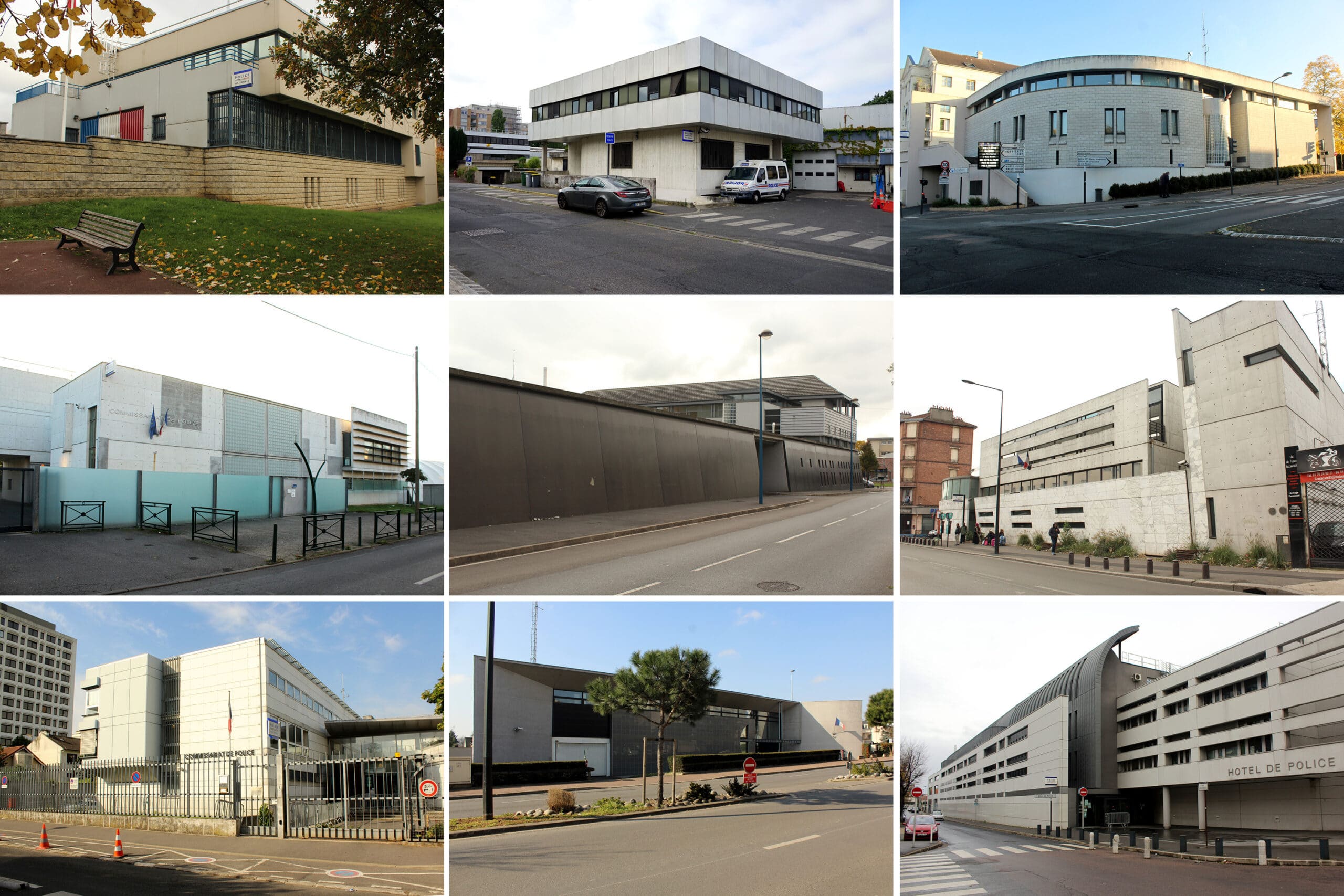
Nacira Guénif-Souilamas: I wonder whether we could think of these police stations as part of the hauntology of the colonial state. It seems to me that the French suburbs, these racialized spaces, are run or organized as colonies, or as reservations. These architectural artifacts are the expression of the French state in that they’re haunted not just by its colonial past, but also by its obsession with coloniality in the way it dominates those segments of the French population that are targeted, or racialized, or undocumented, or living on the streets. Do these infrastructures, these facilities, reveal the degree to which the state is obsessed with the past?
KJ Abudu: I have learned from Kader Attia’s practice that the segregatory logics and infrastructural forms we find in the French banlieues can be traced to architectural modernist experiments in the colonies in the early twentieth century. Modernists devised these disciplinary spatial structures in colonial North Africa, which were later incorporated by the French postwar state. What is so uncanny is that these brutalist buildings ended up housing the very racialized bodies that would migrate to France after the war to fill the country’s labor shortages—as well as their descendants. So Léopold’s elaboration of this spatial entanglement is also a temporal one.
There is also, in my work for the forthcoming Lagos Biennial in 2024, the idea of building a refuge that’s a space for both critique and repair. The exhibition, “Traces of Ecstasy,” is very much informed by the #EndSARS protests that broke out in Nigeria in 2020—an explosive, youth-led mass uprising that spread through all regions of the country, which I’d never seen before. The protests were an attack on the state apparatus, specifically its specially armed police force, and it led me to think about the origins of the police in a postcolonial context like Nigeria: unsurprisingly, you have the police coming into being as part of the colonial state apparatus. It made me think about the police’s original function of protecting colonial private property and dispelling indigenous descent, and how these logics are weirdly reiterated in the present, but this time tied to anti-democratic neoliberal and neocolonial structures.
Léopold Lambert: Just yesterday I was listening to Annie Olaloku-Teriba talk about how the colonial police in Nigeria was created about ten years before the Metropolitan Police in Britain, and how one influenced the other quite strongly.
Sophie Kovel: These reiterations of policing with #EndSARS are happening on multiple levels—from attempts to stifle dissent through concerted police violence to curtailing objectors’ freedom of movement by seizing passports and freezing bank accounts. Despite this, the UK did not change its arms sales authorization policy. What was often deemed failed oversight is in fact a testament to the present tense of colonial logic.
Nacira, when you described colonial modernity as tautological, I couldn’t help but think of a foundational anthology edited by Mabel Wilson, Irene Cheng, and Charles Davis, Race and Modern Architecture. In it, they describe, across a number of case studies on colonial modernism in architecture, the long-outdated tropes of “race-neutral” government buildings and government-funded housing projects, the communities such buildings allege to represent, and the laborers who built them. And more broadly, how colonial violence and slavery were necessarily entwined with nineteenth-century conceptions of progress. “Processes of racialization shaped the very definition of what it means to be modern,” they write. “Architectural historians must contend with these racialized histories, as well as how the disciplines of art and architectural history themselves emerged from racial nationalist logics.”
Léopold Lambert: The German word Tod, or death comes to mind—we could coin the phrase Tod-ology to suggest how death is essential to colonial modernism. Which brings us back to ghosts.
Sophie Kovel: Returning to ghosts and haunting, a necessary question: what methods might one might take up as part of the ongoing project of decolonization?
KJ Abudu: Sometimes I imagine that project as a dispersed force field that comes into being via multiply situated practices. You have writers, poets, policymakers, activists, scientists, teachers, and so on. There isn’t just one way to think about or approach this revolutionary project. It requires so many different angles. You need a multi-fanged artillery, as it were, and it’s always been that way.
Nacira Guénif-Souilamas: Some of my collaborations with artists have led me to this notion that there’s no truth. That truth is not the aim of what is being produced in the social sciences, but more of an obsession, part of what haunts the discipline. I think one way to distance oneself from this haunting is to move toward a practice of arts and culture that more closely resembles an exercise of humility in the face of what always remains to understand and address. As I see it, this is something we often lack in the social sciences.
Beyond the debate in social sciences about positivism, there’s a deceptive drive that lies at the core of the question of the truth. There’s no easy way to solve this. It’s more about how you ask questions, what they drive you toward, and how they lead you.
Sophie Kovel: Perhaps relatedly, in The Practical Past, Hayden White draws a distinction between the historical past and the practical past: the latter being a divergence from a supposedly truthful historiographic telling. That historiographic account might be related to the narratives you describe as characteristic of the social sciences, while the practical past might be what KJ would call excessive or surplus—what’s possible despite the limits of representation.
Nacira Guénif-Souilamas: Connections and meaningful struggles come from the experience of people. As Léopold and KJ suggest: do you want to draw the line or do you want to see it stemming from experience and from people’s thoughts, from the way they relate to histories that seem to be very far away but still speak to their own experience as an oppressed people looking for its own sovereignty?
July 2023
KJ Abudu is a critic and curator based between London, Lagos, and New York. Informed by anti/post/de-colonial theory, queer theory, African philosophy, and Black radical thought, his writings and exhibitions focus on critical art and intellectual practices from the Global South (particularly Africa and its diasporas) that respond to the world-historical conditions produced by colonial modernity. KJ Abudu is the editor of Living with Ghosts: A Reader, Pace Publishing, 2022. He will also be curating “Clocking Out: Time Beyond Management” at Artists Space, New York, May 2023, and “Traces of Ecstasy” at the fourth edition of the Lagos Biennial, 2024.
Nacira Guénif-Souilamas is a sociologist and anthropologist, professor at University Paris 8, and member of LEGS (CNRS). She writes on de/post/colonial France and Euramerica, racialized and sexualized post/colonial minorities and bodies, racism, and islamophobia. Her writings include “Rediscovered Faces of Photography” in Bilingual Reader of the 12th Edition of Bamako Encounters – African Biennale of Photography, Streams Of Consciousness – A Concatenation Of Dividuals. Bonaventure Soh Bejeng Ndikung ed. (Berlin: Archive Books, 2019).
Sophie Kovel is an artist and writer. Her work examines the economic, social, aesthetic, and ideological operations of racial nationalism. Kovel’s criticism has been published in Artforum, BOMB, Frieze, Spike, and elsewhere, and recent exhibitions include Kunsthal Charlottenborg, Denmark; the Jewish Museum, New York; Jenkins Johnson, New York; University of California; Los Angeles; and Petrine, Paris.
Léopold Lambert is a Paris-based trained architect. He is the founding editor of The Funambulist, a print and online magazine dedicated to the politics of space and bodies, founded in 2015. He is the author of four books examining architecture’s active contribution to colonialism: Weaponized Architecture: The Impossibility of Innocence (2012); Topie Impitoyable: La politique du vêtement, du mur et de la rue (2015); La politique du bulldozer: La ruine palestinienne comme projet israélien (2016); and États d’urgence: Une histoire spatiale du continuum colonial francais (2021).

